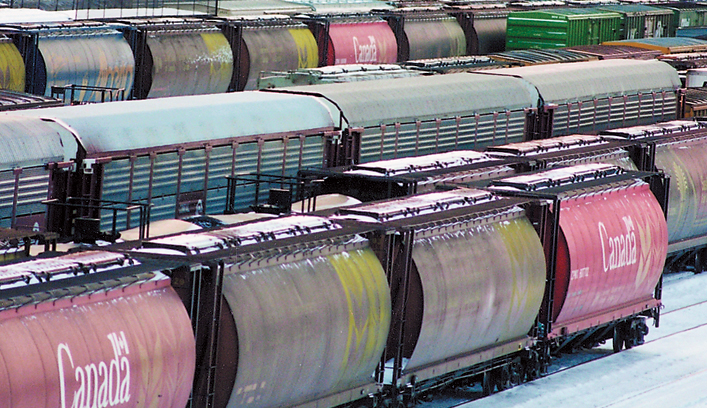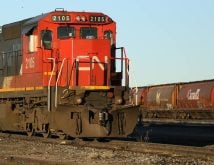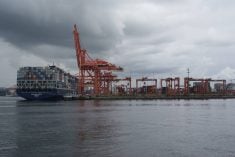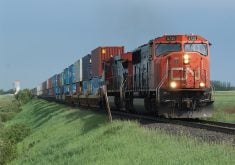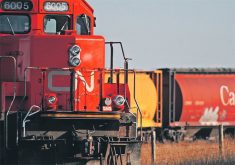Canada’s grain exporters are taking umbrage with complaints from south of the border that they are receiving trade-distorting transportation subsidies.
U.S. Wheat Associates (USW) says Canada’s regulated rail system lowers export costs by capping the amount of revenue the two main railways can earn hauling grain in Western Canada.
“Rail rates limited by statute, rather than the market, lower the transportation costs that exporters must pay for grain,” USW said in a recent submission to the Office of the United States Trade Representative (USTR).
Read Also

Canola support gets mixed response
A series of canola industry support measures announced by the federal government are being met with mixed reviews.
“This in turn means that Canadian exporters can undercut U.S. exporters who often would have purchased wheat from a similar distance inland.”
Wade Sobkowich, executive director of the Western Grain Elevator Association, clarified that it is revenues, not rail rates, that are governed by statute.
And the reason they are governed is that Canadian grain shippers operate in a market where there are only two main railways.
“You’re comparing apples and giraffes when you’re comparing the Canadian system to the U.S. system,” he said.
“Competition is ideally what you want to keep freight rates in check but when you don’t have that, then it’s the government’s role to put in place a policy to counter the effects of a monopoly service provider and that’s what Canada has done.”
He noted that there is far more rail competition in the U.S., leading to true market rates in that market.
In addition, the U.S.-government supported Mississippi River barge system offers a viable alternative to rail transportation in the U.S., which also keeps rates in check.
Sobkowich was surprised to hear USW is suddenly flagging Canada’s maximum revenue entitlement legislation in its annual submission to the USTR about trade barriers.
“It’s not something we’ve heard them raise in the past and we wonder why they’re bringing it up now,” he said.
But he doubts it will gain much political traction because USW is looking at one part of a complicated transportation system and is failing to account for stark differences between the two systems.
“Reasonable people will realize that they can’t describe the elephant by looking at its tail. And that’s what this report does,” said Sobkowich.
For instance, there is no mention that the average length of haul is 1,600 kilometres in Canada versus 1,000 km in the U.S.
USW contends the bottom line is that Canadian grain moving to ports on the Pacific coast or Thunder Bay is exported at lower cost than U.S. grain moving through Pacific ports or Duluth.
“Canada is one of U.S. wheat’s most significant competitors, particularly in spring wheat and durum markets,” said USW in its submission.
“While this would not change if Canadian rail policies were reformed, rail rates that are well below U.S. rates clearly help Canada out-bid U.S. exports in competitive pricing situations.”
No econometric analysis has been conducted but USW estimates Canada’s railway advantage is costing the U.S. wheat sector US$50 to $100 million a year in lost sales.
USW said Canadian grain shippers also benefit from free federal hopper cars for grain moved to export position.
Sobkowich said that statement is “woefully outdated” considering that only about one-quarter of today’s hopper fleet belongs to the government.
He noted that Canadian National Railway and Canadian Pacific Railway have purchased close to 3,000 hopper cars between them in the last two years and CP has 3,000 more on order. There are also leased cars and shipper-owned cars.
“The additional cost associated with buying or leasing all these other cars are steadily working their way into the calculation of the maximum revenue entitlement,” he said.


